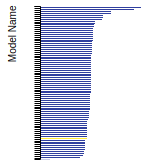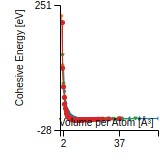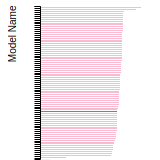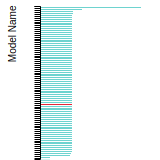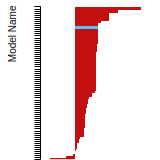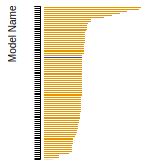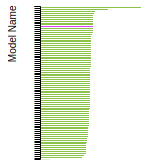 EAM_Dynamo_StollerTammBeland_2016_Ni__MO_103383163946_000
EAM_Dynamo_StollerTammBeland_2016_Ni__MO_103383163946_000
| Title
A single sentence description.
|
EAM potential (LAMMPS cubic hermite tabulation) for Ni developed by Stoller et al. (2016) v000 |
|---|---|
| Description
A short description of the Model describing its key features including for example: type of model (pair potential, 3-body potential, EAM, etc.), modeled species (Ac, Ag, ..., Zr), intended purpose, origin, and so on.
|
This is an EAM potential for high-energy collisions in nickel. It is fitted using a procedure that involves the use of ab initio calculations to determine the magnitude and spatial dependence of the pair interactions at intermediate distances, along with systematic criteria for choosing the joining parameters. |
| Species
The supported atomic species.
| Ni |
| Disclaimer
A statement of applicability provided by the contributor, informing users of the intended use of this KIM Item.
|
None |
| Content Origin | https://www.ctcms.nist.gov/potentials/entry/2016--Stoller-R-E-Tamm-A-Beland-L-K-et-al--Ni/ |
| Contributor |
I Nikiforov |
| Maintainer |
I Nikiforov |
| Developer |
Roger E. Stoller Artur Tamm Laurent K. Béland German D. Samolyuk G. Malcolm Stocks A. Caro Lyudmila V. Slipchenko Yuri N. Osetskiy Alvo Aabloo Mattias Klintenberg Yang Wang |
| Published on KIM | 2022 |
| How to Cite |
This Model originally published in [1] is archived in OpenKIM [2-5]. [1] Stoller RE, Tamm A, Béland LK, Samolyuk GD, Stocks GM, Caro A, et al. Impact of Short-Range Forces on Defect Production from High-Energy Collisions. Journal of Chemical Theory and Computation [Internet]. 2016;12(6):2871–9. Available from: https://doi.org/10.1021/acs.jctc.5b01194 doi:10.1021/acs.jctc.5b01194 — (Primary Source) A primary source is a reference directly related to the item documenting its development, as opposed to other sources that are provided as background information. [2] Stoller RE, Tamm A, Béland LK, Samolyuk GD, Stocks GM, Caro A, et al. EAM potential (LAMMPS cubic hermite tabulation) for Ni developed by Stoller et al. (2016) v000. OpenKIM; 2022. doi:10.25950/442baec7 [3] Foiles SM, Baskes MI, Daw MS, Plimpton SJ. EAM Model Driver for tabulated potentials with cubic Hermite spline interpolation as used in LAMMPS v005. OpenKIM; 2018. doi:10.25950/68defa36 [4] Tadmor EB, Elliott RS, Sethna JP, Miller RE, Becker CA. The potential of atomistic simulations and the Knowledgebase of Interatomic Models. JOM. 2011;63(7):17. doi:10.1007/s11837-011-0102-6 [5] Elliott RS, Tadmor EB. Knowledgebase of Interatomic Models (KIM) Application Programming Interface (API). OpenKIM; 2011. doi:10.25950/ff8f563a Click here to download the above citation in BibTeX format. |
| Citations
This panel presents information regarding the papers that have cited the interatomic potential (IP) whose page you are on. The OpenKIM machine learning based Deep Citation framework is used to determine whether the citing article actually used the IP in computations (denoted by "USED") or only provides it as a background citation (denoted by "NOT USED"). For more details on Deep Citation and how to work with this panel, click the documentation link at the top of the panel. The word cloud to the right is generated from the abstracts of IP principle source(s) (given below in "How to Cite") and the citing articles that were determined to have used the IP in order to provide users with a quick sense of the types of physical phenomena to which this IP is applied. The bar chart shows the number of articles that cited the IP per year. Each bar is divided into green (articles that USED the IP) and blue (articles that did NOT USE the IP). Users are encouraged to correct Deep Citation errors in determination by clicking the speech icon next to a citing article and providing updated information. This will be integrated into the next Deep Citation learning cycle, which occurs on a regular basis. OpenKIM acknowledges the support of the Allen Institute for AI through the Semantic Scholar project for providing citation information and full text of articles when available, which are used to train the Deep Citation ML algorithm. |
This panel provides information on past usage of this interatomic potential (IP) powered by the OpenKIM Deep Citation framework. The word cloud indicates typical applications of the potential. The bar chart shows citations per year of this IP (bars are divided into articles that used the IP (green) and those that did not (blue)). The complete list of articles that cited this IP is provided below along with the Deep Citation determination on usage. See the Deep Citation documentation for more information. 
44 Citations (15 used)
Help us to determine which of the papers that cite this potential actually used it to perform calculations. If you know, click the .
USED (high confidence) A. Tamm, M. Caro, A. Caro, and A. Correa, “Role of electrons in collision cascades in solids. II. Molecular dynamics,” Physical Review B. 2019. link Times cited: 12 USED (low confidence) G. Song and C. J. Hogan, “Crystal grain size effects and crystallinity dynamics during supersonic particle impacts,” International Journal of Plasticity. 2023. link Times cited: 0 USED (low confidence) D. Tramontina et al., “Probing radiation resistance in simulated metallic core–shell nanoparticles,” Computational Materials Science. 2023. link Times cited: 0 USED (low confidence) A. Bayazitov, A. Semenov, and S. V. Dmitriev, “Simulation of the Dynamics of Supersonic N-Crowdions in fcc Lead and Nickel,” Micro. 2023. link Times cited: 0 Abstract: In the case where an interstitial atom is located in a close… read more USED (low confidence) R. Li, Y. Li, Y. Liu, and Q. Peng, “The effect of grain boundary on irradiation resistance of CoCrCuFeNi high entropy alloy,” Computational Materials Science. 2023. link Times cited: 3 USED (low confidence) U. Saha et al., “Microstructure and defect evolution in oxygen ion-irradiated pure nickel – Insights from experimental probes and molecular dynamics simulations,” Materials Chemistry and Physics. 2023. link Times cited: 0 USED (low confidence) R. Pan et al., “Unveiling the characteristics of the residual point defects of collision cascade in Zr-xNb binary system: A molecular dynamics study,” Journal of Nuclear Materials. 2023. link Times cited: 0 USED (low confidence) C.-L. Chen, S. Galitskiy, A. Mishra, and A. Dongare, “Modeling laser interactions with aluminum and tantalum targets using a hybrid atomistic-continuum model,” Journal of Applied Physics. 2023. link Times cited: 1 Abstract: A hybrid atomistic-continuum method can model the microstruc… read more USED (low confidence) S. Zhao, “Influence of temperature and alloying elements on the threshold displacement energies in concentrated Ni–Fe–Cr alloys*,” Chinese Physics B. 2021. link Times cited: 3 USED (low confidence) S. Gupta, P. Periasamy, and B. Narayanan, “Defect dynamics in two-dimensional black phosphorus under argon ion irradiation.,” Nanoscale. 2021. link Times cited: 1 Abstract: Fundamental understanding of the atomic-scale mechanisms und… read more USED (low confidence) C. Becquart, A. D. Backer, P. Olsson, and C. Domain, “Modelling the primary damage in Fe and W: Influence of the short range interactions on the cascade properties: Part 1 – Energy transfer,” Journal of Nuclear Materials. 2021. link Times cited: 9 USED (low confidence) H. He et al., “Primary damage of 10 keV Ga PKA in bulk GaN material under different temperatures,” Nuclear Engineering and Technology. 2020. link Times cited: 14 USED (low confidence) K. Zolnikov, A. Korchuganov, D. Kryzhevich, V. Chernov, and S. Psakhie, “Formation of Point Defect Clusters in Metals with Grain Boundaries under Irradiation,” Physical Mesomechanics. 2019. link Times cited: 19 USED (low confidence) N. T. Trung, H. Phuong, M. Starostenkov, V. Romanenko, and V. Popov, “Threshold displacement energy in Ni, Al and B2 NiAl,” IOP Conference Series: Materials Science and Engineering. 2018. link Times cited: 18 Abstract: For simulation of radiation effects and defects in the Ni-Al… read more USED (low confidence) A. Arjhangmehr and S. Feghhi, “A comparative study of primary damage state in Ni and NiCr/NiFe with a model grain boundary structure,” Computational Materials Science. 2018. link Times cited: 5 NOT USED (low confidence) W. Zhang et al., “Suppressed Size Effect in Nanopillars with Hierarchical Microstructures Enabled by Nanoscale Additive Manufacturing.,” Nano letters. 2023. link Times cited: 1 Abstract: Studies on mechanical size effects in nanosized metals unani… read more NOT USED (low confidence) Y. Liu et al., “Deep learning inter-atomic potential for irradiation damage in 3C-SiC,” Computational Materials Science. 2023. link Times cited: 0 NOT USED (low confidence) M. Fullarton, G. Nandipati, D. Senor, A. Casella, and R. Devanathan, “Molecular Dynamics Study of Primary Damage in the Near-Surface Region in Nickel,” Journal of Nuclear Materials. 2023. link Times cited: 0 NOT USED (low confidence) T. Schmalofski, M. Kroll, H. Dette, and R. Janisch, “Towards active learning: A stopping criterion for the sequential sampling of grain boundary degrees of freedom,” Materialia. 2023. link Times cited: 0 NOT USED (low confidence) B. Waters, D. S. Karls, I. Nikiforov, R. Elliott, E. Tadmor, and B. Runnels, “Automated determination of grain boundary energy and potential-dependence using the OpenKIM framework,” Computational Materials Science. 2022. link Times cited: 5 NOT USED (low confidence) Y. Zhang, L. Wang, and W. J. Weber, “Charged particles: Unique tools to study irradiation resistance of concentrated solid solution alloys,” Journal of Materials Science & Technology. 2022. link Times cited: 3 NOT USED (low confidence) N. A. Mauchamp and S. Hamaguchi, “Why are physical sputtering yields similar for incident ions with different masses?—physical sputtering yields of the Lennard–Jones system,” Journal of Physics D: Applied Physics. 2022. link Times cited: 3 Abstract: Plasma etching of nano-meter-scale complex structures for se… read more NOT USED (low confidence) Y. Zhang, Y. Osetsky, and W. J. Weber, “Tunable Chemical Disorder in Concentrated Alloys: Defect Physics and Radiation Performance.,” Chemical reviews. 2021. link Times cited: 35 Abstract: The development of advanced structural alloys with performan… read more NOT USED (low confidence) Y. Zhang and W. J. Weber, “Ion irradiation and modification: The role of coupled electronic and nuclear energy dissipation and subsequent nonequilibrium processes in materials,” Applied physics reviews. 2020. link Times cited: 71 Abstract: Understanding material responses to energy deposition from e… read more NOT USED (low confidence) B. Zhang, Y. Wang, J. Chen, J. Li, and W. Lai, “Development of an angular-dependent potential for radiation damage study in Fe-Si solutions,” Journal of Nuclear Materials. 2020. link Times cited: 3 NOT USED (low confidence) P. Saidi et al., “Effect of He on the Order-Disorder Transition in Ni_3Al under Irradiation.,” Physical review letters. 2020. link Times cited: 9 Abstract: The order-disorder transition in Ni-Al alloys under irradiat… read more NOT USED (low confidence) Y. Zhang, T. Egami, and W. J. Weber, “Dissipation of radiation energy in concentrated solid-solution alloys: Unique defect properties and microstructural evolution,” MRS Bulletin. 2019. link Times cited: 42 Abstract: The effort to develop metallic alloys with increased structu… read more NOT USED (low confidence) L. Béland et al., “Accurate classical short-range forces for the study of collision cascades in Fe-Ni-Cr,” Comput. Phys. Commun. 2017. link Times cited: 34 NOT USED (low confidence) K. Nordlund and F. Djurabekova, “Molecular Dynamics Simulations of Non-equilibrium Systems,” Handbook of Materials Modeling. 2020. link Times cited: 3 NOT USED (low confidence) C. Becquart, A. Backer, and C. Domain, “Atomistic Modeling of Radiation Damage in Metallic Alloys.” 2018. link Times cited: 11 NOT USED (low confidence) R. Stoller and E. Zarkadoula, “Primary Radiation Damage Formation in Solids.” 2014. link Times cited: 11 NOT USED (high confidence) A. Ghorbani, Y. Luo, P. Saidi, and L. Béland, “Anisotropic diffusion of radiation-induced self-interstitial clusters in HCP zirconium: A molecular dynamics and rate-theory assessment,” Scripta Materialia. 2023. link Times cited: 0 NOT USED (high confidence) L. Wei, C. Zhang, Q.-Y. Zheng, Z. Zeng, and Y. Li, “Individual cascade annealing in BCC tungsten: effects of size and spatial distributions of defects,” RSC Advances. 2022. link Times cited: 2 Abstract: To investigate effects of size and spatial distributions of … read more NOT USED (high confidence) N. A. Mauchamp, K. Ikuse, M. Isobe, and S. Hamaguchi, “Self-sputtering of the Lennard–Jones crystal,” Physics of Plasmas. 2022. link Times cited: 4 Abstract: The self-sputtering yield of the (100) face-centered cubic (… read more NOT USED (high confidence) M. G. Urazaliev, M. E. Stupak, and V. Popov, “Structure and Energy of Symmetric Tilt Boundaries with the 〈110〉 Axis in Ni and the Energy of Formation of Vacancies in Grain Boundaries,” Physics of Metals and Metallography. 2021. link Times cited: 4 NOT USED (high confidence) W. Ouyang, W. Lai, J. Li, J.-bo Liu, and B.-xin Liu, “Atomic Simulations of U-Mo under Irradiation: A New Angular Dependent Potential,” Metals. 2021. link Times cited: 4 Abstract: Uranium-Molybdenum alloy has been a promising option in the … read more NOT USED (high confidence) L. Jiang et al., “Irradiation‐Induced Extremes Create Hierarchical Face‐/Body‐Centered‐Cubic Phases in Nanostructured High Entropy Alloys,” Advanced Materials. 2020. link Times cited: 18 Abstract: A nanoscale hierarchical dual‐phase structure is reported to… read more NOT USED (high confidence) “Impulsive generation of 〈100〉 dislocation loops in BCC iron,” Modelling and Simulation in Materials Science and Engineering. 2020. link Times cited: 2 Abstract: The conditions for the formation of 〈100〉 dislocation loops … read more NOT USED (high confidence) J. Byggmastar, A. Hamedani, K. Nordlund, and F. Djurabekova, “Machine-learning interatomic potential for radiation damage and defects in tungsten,” Physical Review B. 2019. link Times cited: 58 Abstract: We introduce a machine-learning interatomic potential for tu… read more NOT USED (high confidence) N. T. Trung, H. Phuong, and M. Starostenkov, “Molecular dynamics simulation of displacement cascades in B2 NiAl,” Letters on Materials. 2019. link Times cited: 5 Abstract: This study is focused on the behavior of B2 NiAl alloy under… read more NOT USED (high confidence) C. Dai, F. Long, P. Saidi, L. Béland, Z. Yao, and M. Daymond, “Primary damage production in the presence of extended defects and growth of vacancy-type dislocation loops in hcp zirconium,” Physical Review Materials. 2019. link Times cited: 13 Abstract: Production rates in long-term predictive radiation damage ac… read more NOT USED (high confidence) J. Byggmästar, F. Granberg, and K. Nordlund, “Effects of the short-range repulsive potential on cascade damage in iron,” Journal of Nuclear Materials. 2018. link Times cited: 52 NOT USED (high confidence) Y. Zhang, S. Zhao, W. J. Weber, K. Nordlund, F. Granberg, and F. Djurabekova, “Atomic-level heterogeneity and defect dynamics in concentrated solid-solution alloys,” Current Opinion in Solid State & Materials Science. 2017. link Times cited: 142 NOT USED (high confidence) L. Béland, Y. Osetsky, and R. Stoller, “The effect of alloying nickel with iron on the supersonic ballistic stage of high energy displacement cascades,” Acta Materialia. 2016. link Times cited: 28 |
| Funding |
Funder: Basic Energy Sciences Funder: Fonds Québécois de la Recherche sur la Nature et les Technologies Funder: Purdue University |
| Short KIM ID
The unique KIM identifier code.
| MO_103383163946_000 |
| Extended KIM ID
The long form of the KIM ID including a human readable prefix (100 characters max), two underscores, and the Short KIM ID. Extended KIM IDs can only contain alpha-numeric characters (letters and digits) and underscores and must begin with a letter.
| EAM_Dynamo_StollerTammBeland_2016_Ni__MO_103383163946_000 |
| DOI |
10.25950/442baec7 https://doi.org/10.25950/442baec7 https://commons.datacite.org/doi.org/10.25950/442baec7 |
| KIM Item Type
Specifies whether this is a Portable Model (software implementation of an interatomic model); Portable Model with parameter file (parameter file to be read in by a Model Driver); Model Driver (software implementation of an interatomic model that reads in parameters).
| Portable Model using Model Driver EAM_Dynamo__MD_120291908751_005 |
| Driver | EAM_Dynamo__MD_120291908751_005 |
| KIM API Version | 2.2 |
| Potential Type | eam |
| Grade | Name | Category | Brief Description | Full Results | Aux File(s) |
|---|---|---|---|---|---|
| P | vc-species-supported-as-stated | mandatory | The model supports all species it claims to support; see full description. |
Results | Files |
| P | vc-periodicity-support | mandatory | Periodic boundary conditions are handled correctly; see full description. |
Results | Files |
| P | vc-permutation-symmetry | mandatory | Total energy and forces are unchanged when swapping atoms of the same species; see full description. |
Results | Files |
| B | vc-forces-numerical-derivative | consistency | Forces computed by the model agree with numerical derivatives of the energy; see full description. |
Results | Files |
| P | vc-dimer-continuity-c1 | informational | The energy versus separation relation of a pair of atoms is C1 continuous (i.e. the function and its first derivative are continuous); see full description. |
Results | Files |
| P | vc-objectivity | informational | Total energy is unchanged and forces transform correctly under rigid-body translation and rotation; see full description. |
Results | Files |
| P | vc-inversion-symmetry | informational | Total energy is unchanged and forces change sign when inverting a configuration through the origin; see full description. |
Results | Files |
| P | vc-memory-leak | informational | The model code does not have memory leaks (i.e. it releases all allocated memory at the end); see full description. |
Results | Files |
| P | vc-thread-safe | mandatory | The model returns the same energy and forces when computed in serial and when using parallel threads for a set of configurations. Note that this is not a guarantee of thread safety; see full description. |
Results | Files |
| P | vc-unit-conversion | mandatory | The model is able to correctly convert its energy and/or forces to different unit sets; see full description. |
Results | Files |
BCC Lattice Constant
This bar chart plot shows the mono-atomic body-centered cubic (bcc) lattice constant predicted by the current model (shown in the unique color) compared with the predictions for all other models in the OpenKIM Repository that support the species. The vertical bars show the average and standard deviation (one sigma) bounds for all model predictions. Graphs are generated for each species supported by the model.
Cohesive Energy Graph
This graph shows the cohesive energy versus volume-per-atom for the current mode for four mono-atomic cubic phases (body-centered cubic (bcc), face-centered cubic (fcc), simple cubic (sc), and diamond). The curve with the lowest minimum is the ground state of the crystal if stable. (The crystal structure is enforced in these calculations, so the phase may not be stable.) Graphs are generated for each species supported by the model.
Diamond Lattice Constant
This bar chart plot shows the mono-atomic face-centered diamond lattice constant predicted by the current model (shown in the unique color) compared with the predictions for all other models in the OpenKIM Repository that support the species. The vertical bars show the average and standard deviation (one sigma) bounds for all model predictions. Graphs are generated for each species supported by the model.
Dislocation Core Energies
This graph shows the dislocation core energy of a cubic crystal at zero temperature and pressure for a specific set of dislocation core cutoff radii. After obtaining the total energy of the system from conjugate gradient minimizations, non-singular, isotropic and anisotropic elasticity are applied to obtain the dislocation core energy for each of these supercells with different dipole distances. Graphs are generated for each species supported by the model.
(No matching species)FCC Elastic Constants
This bar chart plot shows the mono-atomic face-centered cubic (fcc) elastic constants predicted by the current model (shown in blue) compared with the predictions for all other models in the OpenKIM Repository that support the species. The vertical bars show the average and standard deviation (one sigma) bounds for all model predictions. Graphs are generated for each species supported by the model.
FCC Lattice Constant
This bar chart plot shows the mono-atomic face-centered cubic (fcc) lattice constant predicted by the current model (shown in red) compared with the predictions for all other models in the OpenKIM Repository that support the species. The vertical bars show the average and standard deviation (one sigma) bounds for all model predictions. Graphs are generated for each species supported by the model.
FCC Stacking Fault Energies
This bar chart plot shows the intrinsic and extrinsic stacking fault energies as well as the unstable stacking and unstable twinning energies for face-centered cubic (fcc) predicted by the current model (shown in blue) compared with the predictions for all other models in the OpenKIM Repository that support the species. The vertical bars show the average and standard deviation (one sigma) bounds for all model predictions. Graphs are generated for each species supported by the model.
FCC Surface Energies
This bar chart plot shows the mono-atomic face-centered cubic (fcc) relaxed surface energies predicted by the current model (shown in blue) compared with the predictions for all other models in the OpenKIM Repository that support the species. The vertical bars show the average and standard deviation (one sigma) bounds for all model predictions. Graphs are generated for each species supported by the model.
SC Lattice Constant
This bar chart plot shows the mono-atomic simple cubic (sc) lattice constant predicted by the current model (shown in the unique color) compared with the predictions for all other models in the OpenKIM Repository that support the species. The vertical bars show the average and standard deviation (one sigma) bounds for all model predictions. Graphs are generated for each species supported by the model.
Cubic Crystal Basic Properties Table
Species: NiCreators:
Contributor: karls
Publication Year: 2019
DOI: https://doi.org/10.25950/64cb38c5
This Test Driver uses LAMMPS to compute the cohesive energy of a given monoatomic cubic lattice (fcc, bcc, sc, or diamond) at a variety of lattice spacings. The lattice spacings range from a_min (=a_min_frac*a_0) to a_max (=a_max_frac*a_0) where a_0, a_min_frac, and a_max_frac are read from stdin (a_0 is typically approximately equal to the equilibrium lattice constant). The precise scaling and number of lattice spacings sampled between a_min and a_0 (a_0 and a_max) is specified by two additional parameters passed from stdin: N_lower and samplespacing_lower (N_upper and samplespacing_upper). Please see README.txt for further details.
| Test | Test Results | Link to Test Results page | Benchmark time
Usertime multiplied by the Whetstone Benchmark. This number can be used (approximately) to compare the performance of different models independently of the architecture on which the test was run.
Measured in Millions of Whetstone Instructions (MWI) |
|---|---|---|---|
| Cohesive energy versus lattice constant curve for bcc Ni v004 | view | 10473 | |
| Cohesive energy versus lattice constant curve for diamond Ni v004 | view | 10213 | |
| Cohesive energy versus lattice constant curve for fcc Ni v004 | view | 7847 | |
| Cohesive energy versus lattice constant curve for sc Ni v004 | view | 7897 |
Creators: Junhao Li and Ellad Tadmor
Contributor: tadmor
Publication Year: 2019
DOI: https://doi.org/10.25950/5853fb8f
Computes the cubic elastic constants for some common crystal types (fcc, bcc, sc, diamond) by calculating the hessian of the energy density with respect to strain. An estimate of the error associated with the numerical differentiation performed is reported.
| Test | Test Results | Link to Test Results page | Benchmark time
Usertime multiplied by the Whetstone Benchmark. This number can be used (approximately) to compare the performance of different models independently of the architecture on which the test was run.
Measured in Millions of Whetstone Instructions (MWI) |
|---|---|---|---|
| Elastic constants for bcc Ni at zero temperature v006 | view | 17057 | |
| Elastic constants for fcc Ni at zero temperature v006 | view | 16669 | |
| Elastic constants for sc Ni at zero temperature v006 | view | 23332 |
Creators:
Contributor: ilia
Publication Year: 2024
DOI: https://doi.org/10.25950/2f2c4ad3
Computes the equilibrium crystal structure and energy for an arbitrary crystal at zero temperature and applied stress by performing symmetry-constrained relaxation. The crystal structure is specified using the AFLOW prototype designation. Multiple sets of free parameters corresponding to the crystal prototype may be specified as initial guesses for structure optimization. No guarantee is made regarding the stability of computed equilibria, nor that any are the ground state.
| Test | Test Results | Link to Test Results page | Benchmark time
Usertime multiplied by the Whetstone Benchmark. This number can be used (approximately) to compare the performance of different models independently of the architecture on which the test was run.
Measured in Millions of Whetstone Instructions (MWI) |
|---|---|---|---|
| Equilibrium crystal structure and energy for Ni in AFLOW crystal prototype A_cF4_225_a v002 | view | 92983 | |
| Equilibrium crystal structure and energy for Ni in AFLOW crystal prototype A_cI2_229_a v002 | view | 57054 | |
| Equilibrium crystal structure and energy for Ni in AFLOW crystal prototype A_hP2_194_c v002 | view | 45752 |
Creators: Brandon Runnels
Contributor: brunnels
Publication Year: 2019
DOI: https://doi.org/10.25950/4723cee7
Computes grain boundary energy for a range of tilt angles given a crystal structure, tilt axis, and material.
| Test | Test Results | Link to Test Results page | Benchmark time
Usertime multiplied by the Whetstone Benchmark. This number can be used (approximately) to compare the performance of different models independently of the architecture on which the test was run.
Measured in Millions of Whetstone Instructions (MWI) |
|---|---|---|---|
| Relaxed energy as a function of tilt angle for a 112 symmetric tilt grain boundary in fcc Ni v000 | view | 60906883 |
Creators:
Contributor: brunnels
Publication Year: 2022
DOI: https://doi.org/10.25950/2c59c9d6
Computes grain boundary energy for a range of tilt angles given a crystal structure, tilt axis, and material.
| Test | Test Results | Link to Test Results page | Benchmark time
Usertime multiplied by the Whetstone Benchmark. This number can be used (approximately) to compare the performance of different models independently of the architecture on which the test was run.
Measured in Millions of Whetstone Instructions (MWI) |
|---|---|---|---|
| Relaxed energy as a function of tilt angle for a 100 symmetric tilt grain boundary in fcc Ni v001 | view | 12025513 | |
| Relaxed energy as a function of tilt angle for a 110 symmetric tilt grain boundary in fcc Ni v001 | view | 24076959 | |
| Relaxed energy as a function of tilt angle for a 111 symmetric tilt grain boundary in fcc Ni v001 | view | 21136802 |
Creators: Daniel S. Karls and Junhao Li
Contributor: karls
Publication Year: 2019
DOI: https://doi.org/10.25950/2765e3bf
Equilibrium lattice constant and cohesive energy of a cubic lattice at zero temperature and pressure.
| Test | Test Results | Link to Test Results page | Benchmark time
Usertime multiplied by the Whetstone Benchmark. This number can be used (approximately) to compare the performance of different models independently of the architecture on which the test was run.
Measured in Millions of Whetstone Instructions (MWI) |
|---|---|---|---|
| Equilibrium zero-temperature lattice constant for bcc Ni v007 | view | 10563 | |
| Equilibrium zero-temperature lattice constant for diamond Ni v007 | view | 11070 | |
| Equilibrium zero-temperature lattice constant for fcc Ni v007 | view | 6038 | |
| Equilibrium zero-temperature lattice constant for sc Ni v007 | view | 6448 |
Creators: Daniel S. Karls and Junhao Li
Contributor: karls
Publication Year: 2019
DOI: https://doi.org/10.25950/c339ca32
Calculates lattice constant of hexagonal bulk structures at zero temperature and pressure by using simplex minimization to minimize the potential energy.
| Test | Test Results | Link to Test Results page | Benchmark time
Usertime multiplied by the Whetstone Benchmark. This number can be used (approximately) to compare the performance of different models independently of the architecture on which the test was run.
Measured in Millions of Whetstone Instructions (MWI) |
|---|---|---|---|
| Equilibrium lattice constants for hcp Ni v005 | view | 122037 |
Creators:
Contributor: mjwen
Publication Year: 2024
DOI: https://doi.org/10.25950/9d9822ec
This Test Driver uses LAMMPS to compute the linear thermal expansion coefficient at a finite temperature under a given pressure for a cubic lattice (fcc, bcc, sc, diamond) of a single given species.
| Test | Test Results | Link to Test Results page | Benchmark time
Usertime multiplied by the Whetstone Benchmark. This number can be used (approximately) to compare the performance of different models independently of the architecture on which the test was run.
Measured in Millions of Whetstone Instructions (MWI) |
|---|---|---|---|
| Linear thermal expansion coefficient of fcc Ni at 293.15 K under a pressure of 0 MPa v002 | view | 997193 |
Creators: Matt Bierbaum
Contributor: mattbierbaum
Publication Year: 2019
DOI: https://doi.org/10.25950/64f4999b
Calculates the phonon dispersion relations for fcc lattices and records the results as curves.
| Test | Test Results | Link to Test Results page | Benchmark time
Usertime multiplied by the Whetstone Benchmark. This number can be used (approximately) to compare the performance of different models independently of the architecture on which the test was run.
Measured in Millions of Whetstone Instructions (MWI) |
|---|---|---|---|
| Phonon dispersion relations for fcc Ni v004 | view | 129498 |
Creators:
Contributor: SubrahmanyamPattamatta
Publication Year: 2019
DOI: https://doi.org/10.25950/b4cfaf9a
Intrinsic and extrinsic stacking fault energies, unstable stacking fault energy, unstable twinning energy, stacking fault energy as a function of fractional displacement, and gamma surface for a monoatomic FCC lattice at zero temperature and pressure.
| Test | Test Results | Link to Test Results page | Benchmark time
Usertime multiplied by the Whetstone Benchmark. This number can be used (approximately) to compare the performance of different models independently of the architecture on which the test was run.
Measured in Millions of Whetstone Instructions (MWI) |
|---|---|---|---|
| Stacking and twinning fault energies for fcc Ni v002 | view | 13544970 |
Creators: Matt Bierbaum
Contributor: mattbierbaum
Publication Year: 2019
DOI: https://doi.org/10.25950/6c43a4e6
Calculates the surface energy of several high symmetry surfaces and produces a broken-bond model fit. In latex form, the fit equations are given by:
E_{FCC} (\vec{n}) = p_1 (4 \left( |x+y| + |x-y| + |x+z| + |x-z| + |z+y| +|z-y|\right)) + p_2 (8 \left( |x| + |y| + |z|\right)) + p_3 (2 ( |x+ 2y + z| + |x+2y-z| + |x-2y + z| + |x-2y-z| + |2x+y+z| + |2x+y-z| +|2x-y+z| +|2x-y-z| +|x+y+2z| +|x+y-2z| +|x-y+2z| +|x-y-2z| ) + c
E_{BCC} (\vec{n}) = p_1 (6 \left( | x+y+z| + |x+y-z| + |-x+y-z| + |x-y+z| \right)) + p_2 (8 \left( |x| + |y| + |z|\right)) + p_3 (4 \left( |x+y| + |x-y| + |x+z| + |x-z| + |z+y| +|z-y|\right)) +c.
In Python, these two fits take the following form:
def BrokenBondFCC(params, index):
import numpy
x, y, z = index
x = x / numpy.sqrt(x**2.+y**2.+z**2.)
y = y / numpy.sqrt(x**2.+y**2.+z**2.)
z = z / numpy.sqrt(x**2.+y**2.+z**2.)
return params[0]*4* (abs(x+y) + abs(x-y) + abs(x+z) + abs(x-z) + abs(z+y) + abs(z-y)) + params[1]*8*(abs(x) + abs(y) + abs(z)) + params[2]*(abs(x+2*y+z) + abs(x+2*y-z) +abs(x-2*y+z) +abs(x-2*y-z) + abs(2*x+y+z) +abs(2*x+y-z) +abs(2*x-y+z) +abs(2*x-y-z) + abs(x+y+2*z) +abs(x+y-2*z) +abs(x-y+2*z) +abs(x-y-2*z))+params[3]
def BrokenBondBCC(params, x, y, z):
import numpy
x, y, z = index
x = x / numpy.sqrt(x**2.+y**2.+z**2.)
y = y / numpy.sqrt(x**2.+y**2.+z**2.)
z = z / numpy.sqrt(x**2.+y**2.+z**2.)
return params[0]*6*(abs(x+y+z) + abs(x-y-z) + abs(x-y+z) + abs(x+y-z)) + params[1]*8*(abs(x) + abs(y) + abs(z)) + params[2]*4* (abs(x+y) + abs(x-y) + abs(x+z) + abs(x-z) + abs(z+y) + abs(z-y)) + params[3]
| Test | Test Results | Link to Test Results page | Benchmark time
Usertime multiplied by the Whetstone Benchmark. This number can be used (approximately) to compare the performance of different models independently of the architecture on which the test was run.
Measured in Millions of Whetstone Instructions (MWI) |
|---|---|---|---|
| Broken-bond fit of high-symmetry surface energies in fcc Ni v004 | view | 120187 |
Creators:
Contributor: efuem
Publication Year: 2023
DOI: https://doi.org/10.25950/fca89cea
Computes the monovacancy formation energy and relaxation volume for cubic and hcp monoatomic crystals.
| Test | Test Results | Link to Test Results page | Benchmark time
Usertime multiplied by the Whetstone Benchmark. This number can be used (approximately) to compare the performance of different models independently of the architecture on which the test was run.
Measured in Millions of Whetstone Instructions (MWI) |
|---|---|---|---|
| Monovacancy formation energy and relaxation volume for fcc Ni | view | 517626 |
Creators:
Contributor: efuem
Publication Year: 2023
DOI: https://doi.org/10.25950/c27ba3cd
Computes the monovacancy formation and migration energies for cubic and hcp monoatomic crystals.
| Test | Test Results | Link to Test Results page | Benchmark time
Usertime multiplied by the Whetstone Benchmark. This number can be used (approximately) to compare the performance of different models independently of the architecture on which the test was run.
Measured in Millions of Whetstone Instructions (MWI) |
|---|---|---|---|
| Vacancy formation and migration energy for fcc Ni | view | 1547871 |
| Test | Error Categories | Link to Error page |
|---|---|---|
| Elastic constants for diamond Ni at zero temperature v001 | other | view |
ElasticConstantsHexagonal__TD_612503193866_004
| Test | Error Categories | Link to Error page |
|---|---|---|
| Elastic constants for hcp Ni at zero temperature v004 | other | view |
PhononDispersionCurve__TD_530195868545_004
| Test | Error Categories | Link to Error page |
|---|---|---|
| Phonon dispersion relations for fcc Ni v004 | other | view |
SurfaceEnergyCubicCrystalBrokenBondFit__TD_955413365818_004
| Test | Error Categories | Link to Error page |
|---|---|---|
| Broken-bond fit of high-symmetry surface energies in fcc Ni v004 | other | view |
| EAM_Dynamo_StollerTammBeland_2016_Ni__MO_103383163946_000.txz | Tar+XZ | Linux and OS X archive |
| EAM_Dynamo_StollerTammBeland_2016_Ni__MO_103383163946_000.zip | Zip | Windows archive |
This Model requires a Model Driver. Archives for the Model Driver EAM_Dynamo__MD_120291908751_005 appear below.
| EAM_Dynamo__MD_120291908751_005.txz | Tar+XZ | Linux and OS X archive |
| EAM_Dynamo__MD_120291908751_005.zip | Zip | Windows archive |
Data used in fitting:
The articles cited below are vague as to what specific quantities were used in the fitting process. They state that, “These potentials are well fitted to basic material properties such as lattice constants, elastic constants, bulk moduli, vacancy formation energies, sublimation energies, and heats of solution.”
Login to edit Wiki content
